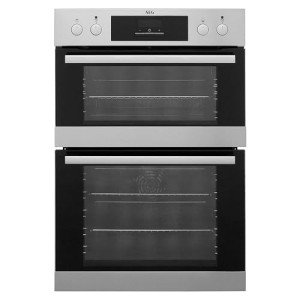The Future of Culinary Convenience: Integrated Ovens and Hobs
In the ever-evolving world of cooking area design, integrated ovens and hobs are at the forefront of modern cooking development. These devices not only assure visual appeal but also enhance functionality and effectiveness, changing how we prepare our meals. As click the up coming article seek to produce seamless, elegant, and easy to use cooking areas, the combination of ovens and hobs provides an ideal option. This post explores what integrated ovens and hobs are, their advantages, and essential considerations for those seeking to upgrade their cooking area.

What Are Integrated Ovens and Hobs?
Integrated ovens and hobs are kitchen devices flawlessly built into the kitchen cabinetry or counters, instead of standing out as different entities. Integrated ovens are designed to mix into cooking area units, offering a flush finish with surrounding cabinetry. Likewise, integrated hobs are mounted directly into the countertop, creating a streamlined appearance. This minimalist style approach not only raises the visual appeal of the kitchen area however also maximizes offered area.
Types of Integrated Ovens
Single Ovens: These standalone units are created for simpleness and ease of use, including a single cooking chamber and numerous cooking modes such as baking, barbecuing, and roasting.
Double Ovens: Ideal for bigger families or devoted cooks, double ovens supply 2 independent cooking compartments, enabling numerous dishes to be ready all at once at different temperature levels.
Mix Ovens: Blending conventional baking and steam cooking, mix ovens provide adaptability for numerous cooking needs, retaining wetness while ensuring completely prepared meals.
Types of Integrated Hobs
Gas Hobs: These hobs permit accurate temperature control and instant heat, making them a preferred amongst professional chefs and cooking lovers.
Induction Hobs: Known for their efficiency and safety, induction hobs use electromagnetic energy to heat pots and pans straight. They are fast to heat and cool down rapidly, reducing the danger of burns.
Electric Hobs: Featuring smooth ceramic or glass surfaces, electric hobs are simple to clean and supply an even heat distribution for a range of cooking designs.
Benefits of Integrated Ovens and Hobs
1. Space Optimization
With the pattern of smaller sized home and open-concept homes, integrated appliances help optimize kitchen space. By fitting seamlessly into kitchen cabinetry, kitchen areas can appear bigger and more open, lessening mess and enhancing visual appeal.
2. Aesthetic Appeal
Integrated ovens and hobs supply a streamlined, contemporary appearance that fits well within different style themes. The ability to tailor kitchen cabinetry makes sure that house owners can accomplish a cohesive look that matches their style, whether modern, traditional, or something in between.
3. Enhanced Functionality
Integrated devices frequently come with sophisticated functions such as clever technology, self-cleaning options, and different cooking modes. These enhancements not only streamline the cooking process but also improve functionality, making preparing an enjoyable experience.
4. Safety Features
Integrated hobs, specifically induction models, are thought about safer than traditional cooking surface areas. They cool down rapidly, decreasing the risk of burns, and often include features like kid locks and automated shut-off for additional security.
Key Considerations When Choosing Integrated Ovens and Hobs
1. Space and Layout
Before buying integrated home appliances, think about the area available in your cooking area. Procedure the kitchen cabinetry and counter tops carefully to guarantee a best fit, permitting appropriate ventilation and setup area.
2. Cooking Needs
Assess your cooking habits and choices. If you frequently entertain or cook big meals, a double oven might be the finest option. Conversely, if you're an occasional chef, a single oven might be sufficient. Likewise, selecting between gas, electric, or induction hobs will depend on your cooking design and convenience level.
3. Energy Efficiency
With rising energy expenses and growing ecological issues, opting for energy-efficient home appliances can save money in the long run. Search for products with high energy rankings and features like programmable timers and eco-modes.
4. Quality and Brand
Purchasing premium appliances from reputable brand names makes sure resilience and efficiency. Checking out client evaluations and looking for suggestions can help narrow down the best choices tailored to your needs.
Conclusion
Integrated ovens and hobs are more than simply kitchen home appliances; they represent a shift towards a more practical, elegant, and efficient approach to cooking. As homeowners focus on seamless design, benefit, and advanced features, these integrated options will certainly shape the cooking areas of tomorrow. Whether renovating a kitchen area or creating a brand-new one from scratch, incorporating ovens and hobs is a financial investment that guarantees to boost both culinary experiences and the overall aesthetic of the home.
